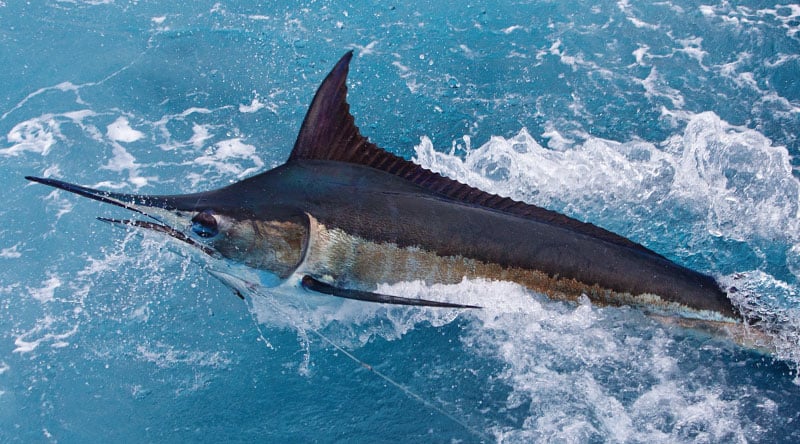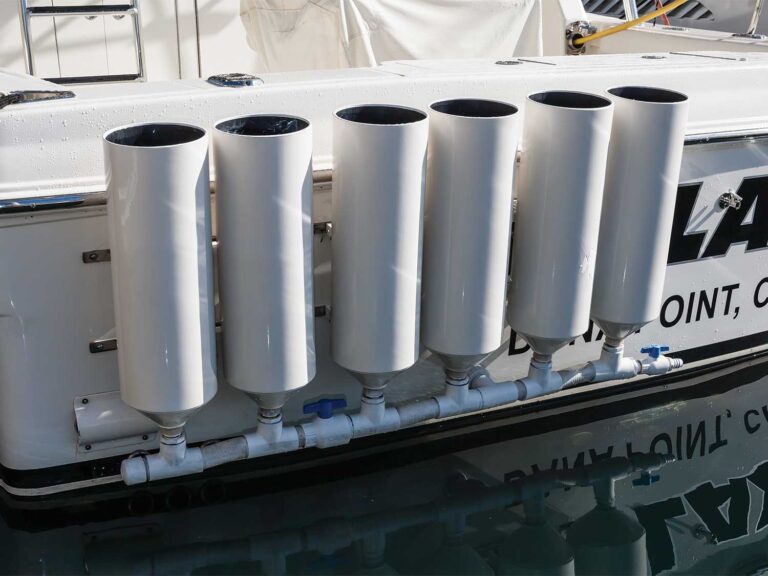
On the Atlantic coast, just over an hour’s drive south of the Georgia-Florida border, sits a truly historic coastal gem: St. Augustine, Florida. Founded by the Spanish explorer Pedro Menéndez de Avilés more than 435 years ago, the city is the oldest continuously occupied European-established settlement in the continental United States. Walking the historic streets of St. Augustine is akin to being transported back in time to a bygone era. Fort Castillo de San Marcos and Flagler College offer impressive sights, while 11 pedestrian-only blocks beckon visitors to explore cobblestone streets lined with shops and restaurants. Founded in 1565, some 42 years before the English settlement at Jamestown and 55 years prior to the Pilgrims hitting Plymouth Rock, St. Augustine delights anglers and history buffs alike.
Not all the attractions lie ashore: The vast Atlantic is alive with game fish nearly every month of the year. St. Augustine is located right on the Intracoastal Waterway and boasts relatively easy access to the open ocean from several large marinas, making it a popular stop for sport-fishers traveling up the East Coast from southern Florida, the Caribbean or the Gulf of Mexico. Anglers seeking pelagic action usually start fishing along the areas where the north-flowing Gulf Stream begins to interact with the bottom contours: The edge of the continental shelf marks a prime feeding ground for nearly all pelagic species.
Blues, Sails and Wahoo
In the summer months, blue marlin also show up off St. Augustine, making it one of the few places in Florida where anglers regularly target blues. They get so many that the area even boasts a marlin club, the Northeast Florida Marlin Association (nefma.com), which hosts a tournament every year. Anglers here may choose to cover ground with a spread of big marlin lures, but most opt for a mixed-bag approach of skirted and naked ballyhoo. It’s attractive to a wider variety of species, especially dolphin and both yellowfin and blackfin tuna, which can frequent the same water.
One phenomenon that seems to happen with more frequency these days is a red-hot sailfish fishery in the fall. As close as 25 miles from the inlet, anglers have reported seeing vast numbers of sails balling bait on the surface (a sight typically more common off Isla Mujeres than the East Coast), making for some outstanding fishing. When specifically targeting sails like this, a quick shift in rigging tactics to naked ballyhoo and circle hooks results in a higher hookup rate, as well as reduced mortality. Be sure to bring plenty of sailfish flags, as the numbers can pile up fast when the bite’s on, and double-digit days are not uncommon.
Another fishery that doesn’t receive a lot of attention but that’s a whole lot of fun off St. Augustine is the run of big wahoo in the late fall and winter months. These torpedo-shaped speedsters invade the offshore grounds with a vengeance once the water temperature cools a few degrees. And while a few large wahoo are captured every year by anglers live-baiting for king mackerel, the preferred techniques by most boats fishing here are either high-speed trolling with heavy lures or switching over a few ballyhoo rigs to wire leaders and dropping at least one deep with the aid of a planer or downrigger. For reasons known only to themselves, wahoo seem to prefer a bait swimming deep, with the downrigger rod often outproducing the surface baits by a good margin on many days. These fish average from around 20 pounds to well over 50, and a few real studs well over that mark are landed each season, so be prepared for a big bite with appropriate tackle and terminal rigging.

Going Deeper
If spending all day on the troll doesn’t provide enough excitement, you can also try for a swordfish once the sun goes down. Several local fishing aficionados, including the legendary Don Combs, pioneered the area’s swordfish fishery many years ago, fine-tuning their techniques and locations to the point where they could reliably produce bites. The standard techniques of using both rigged squid and live bait fished at a variety of depths with lightsticks attached to the leaders work just as well off St. Augustine as they do elsewhere. Just keep an eye on the radar: The nearby ports of Jacksonville and St. Simons Island, Georgia, mean lots of commercial traffic in the area, both during the day and at night.
Bottom-fishing is another great way to spend the day and add some tasty game fish to the fillet table. A variety of good structures, both man-made and natural, can be found off St. Augustine, harboring grouper, several species of snapper, cobia and more. A live bait fished on top often adds a kingfish or a blackfin tuna to the box as well.
Back ashore, the list of attractions appeals to nearly every visitor of any age. St. Augustine boasts a wide array of lodging options, ranging from historic bed-and-breakfast inns for couples to family-friendly beachfront hotels, and everything in between. So whether it’s a quick stopover during a trip up or down the coast, a romantic getaway for two, or a family beach vacation, a trip to St. Augustine will be unlike any other.







